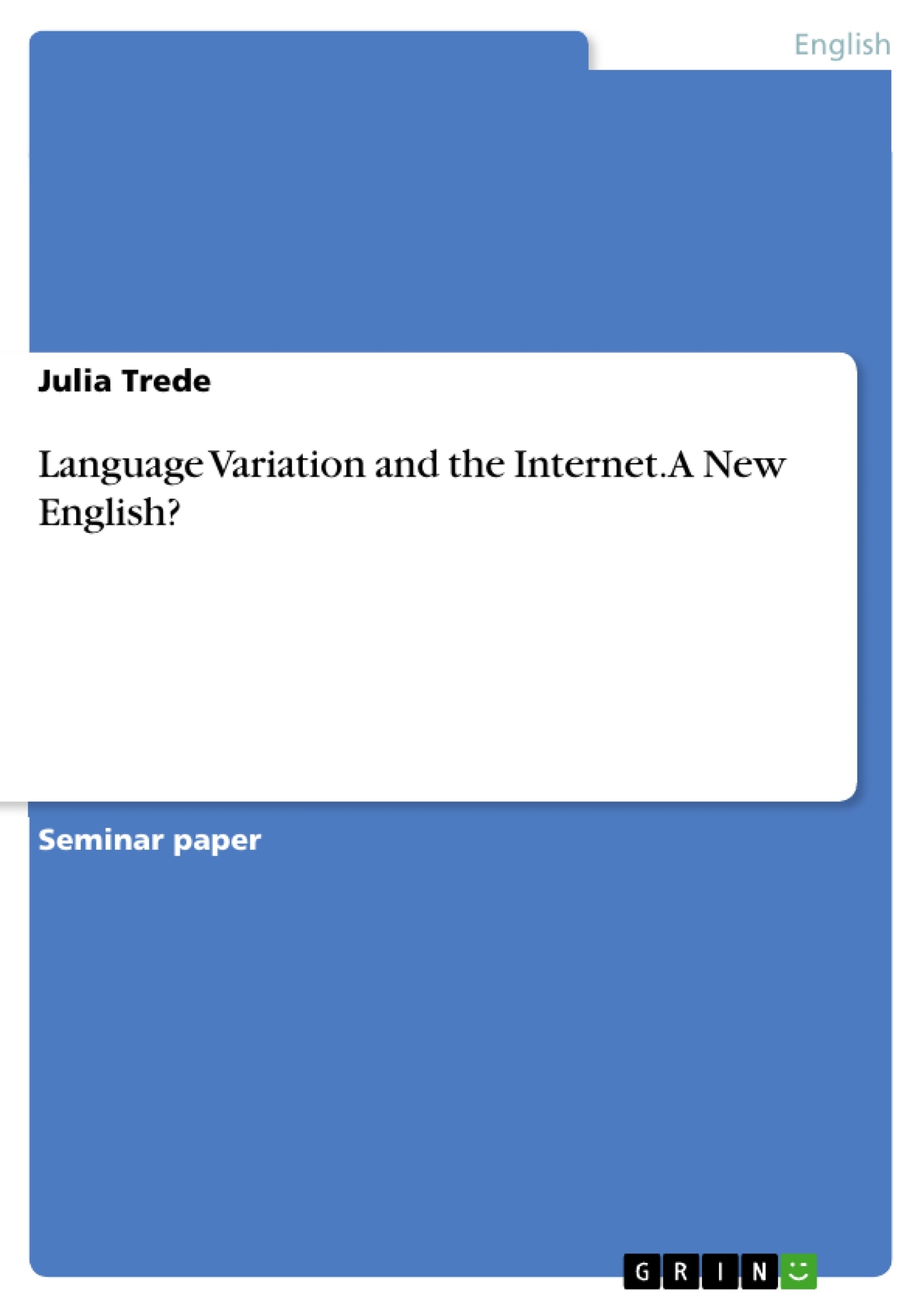Book printing, telegraph, telephone and broadcasting – all these communication technologies influenced our language and so does the Internet. This term paper examines if the invention of the Internet triggered a language revolution and if a new English has evolved.
In order to analyze the language of the Internet, it is necessary to provide a basic framework which is subject to the first chapter. Chapter one provides background information on the concept of language variation and explains important features of language variety. Dealing with language variety is crucial since the subsequent analysis aims to identify if a language variety has evolved. The second chapter deals with the definition and limitation of existing Internet situations which will be separately analyzed in chapter four. The subsequent chapter is concerned with the concept of Netspeak which was initially introduced by the linguist David Crystal. Besides the determination of Netspeak, chapter three also differentiates written and spoken language, in order to analyze whether Netspeak can be considered either spoken or written language. Furthermore, main linguistic features of Netspeak will be examined in order to compare them with each Internet situation. This procedure enables to answeri the question whether the “language of the Internet” can be considered homogenous or whether each situation applies different linguistic features. Chapter four comprises a detailed analysis of the Internet situations e-mail, chatgroups, virtual worlds and World Wide Web. In the course of this chapter, each situation will be examined according to unique linguistic features to find out if a new language variety has emerged. Additionally, special attention is given to linguistic features of Netspeak to clarify if the language of the Internet can be considered a homogenous language or a language which differs from situation to situation.
Table of Contents
Introduction
1. Language Variation
1.1. Why does a language vary?
1.2. Features of a language variety
2. Defining Internet situations
2.1. E-Mail
2.2. Chatgroups
2.2.1. Synchronous chatgroups
2.2.2. Asynchronous chatgroups
2.3. Virtual worlds
2.4. World Wide Web
3. Netspeak
3.1. Definition of Netspeak
3.2. Differences between written and spoken language
3.3. Features of Netspeak – A reflection of written or spoken language?
3.4. Main Linguistic features of Netspeak
4. Characterization of the language used in Internet situations
4.1. E-Mail
4.2. Chatgroups
4.2.1. Asynchronous Chatgroups
4.2.2. Synchronous Chatgroups
4.3. Virtual Worlds
4.4. World Wide Web
Conclusion
Works Cited
- Citation du texte
- Julia Trede (Auteur), 2013, Language Variation and the Internet. A New English?, Munich, GRIN Verlag, https://www.grin.com/document/511360
-

-

-

-
Téléchargez vos propres textes! Gagnez de l'argent et un iPhone X. -

-
Téléchargez vos propres textes! Gagnez de l'argent et un iPhone X. -

-
Téléchargez vos propres textes! Gagnez de l'argent et un iPhone X. -

-
Téléchargez vos propres textes! Gagnez de l'argent et un iPhone X. -

-
Téléchargez vos propres textes! Gagnez de l'argent et un iPhone X. -

-
Téléchargez vos propres textes! Gagnez de l'argent et un iPhone X. -

-
Téléchargez vos propres textes! Gagnez de l'argent et un iPhone X.

